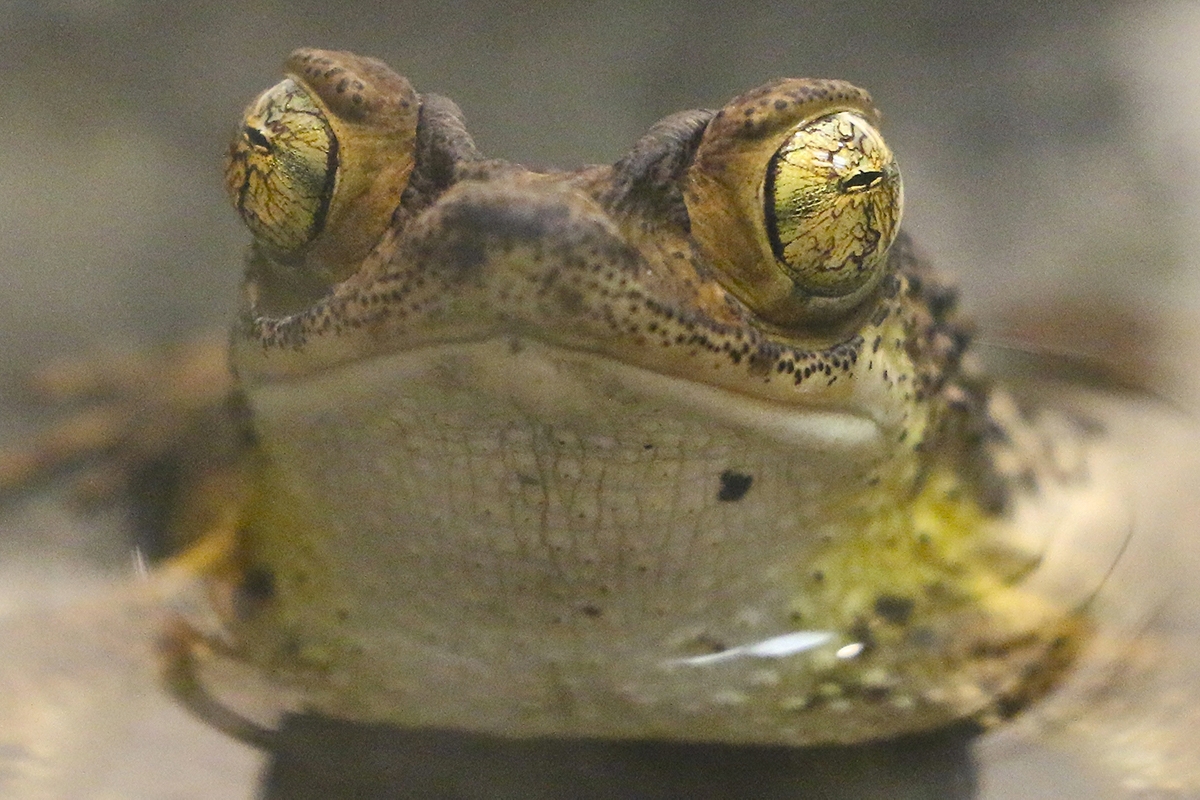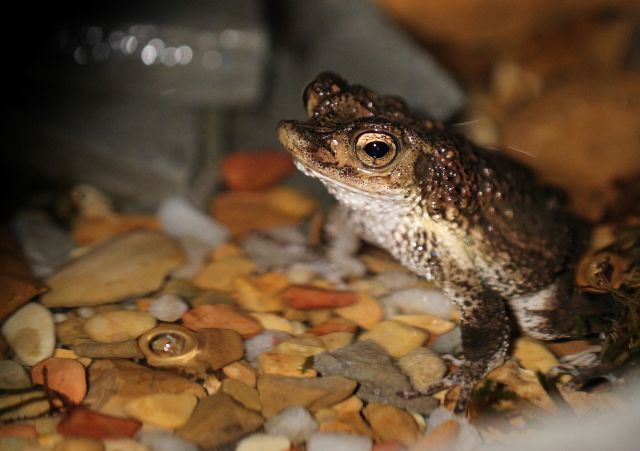
Species Information
The Puerto Rican Crested Toad (Peltophryne lemur) is the only toad native to the island of Puerto Rico. It makes its home on the northern and southern coasts of the island. It is known for its distinctive snout and bony head crest. Crested toads live in low lying areas with rocky crevices or well-drained soil. They mate in pools of water during rainy season, and can have two years between breeding depending on rainfall patterns.
The Puerto Rican Crested Toad was the first amphibian placed on a Species Survival Plan (SSP) due to rapid population declines because of the invasive marine toad that was introduced to Puerto Rico in the 1920s. The SSP focuses on research, habitat protection, citizen education and outreach, and a viable reintroduction program. Through the SSP, institutions have sent more than 263,575 tadpoles bred at zoos and aquariums in North America to be released into protected ponds in the Guanica National Forest. Upon release, the tadpoles are monitored by the USFWS and the Puerto Rico Department of Natural and Environmental Resources (DNER) until they metamorphosed and dispersed from the release pond.

IUCN Classified: Critically Endangered
The Puerto Rican Crested Toad is listed as critically endangered by the International Union for Conservation of Nature (IUCN) and is currently limited to one remaining wild population (fluctuating between 1,000 and 3,000 adult toads) in the Guanica National Forest in the southern part of the island.



